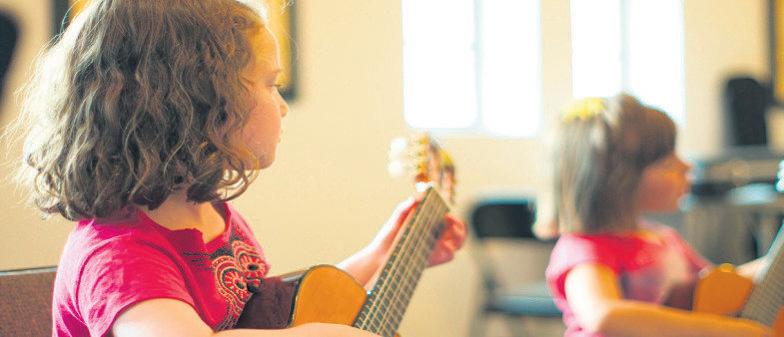
2 minute read
Improve student performance with positive reinforcement
Positive reinforcement is best carried out when it’s immediate, specific and genuine. (Photo: Stride Learning). Improve student performance with positive reinforcement
BY SHELLEY WIDHALM RAISED IN THE ROCKIES
Many of the students at Stride Learning’s afterschool program want to do their schoolwork, but they may not know where to start. How do they break down their assignments into manageable pieces? How do they ignore the negative feedback loop they’re caught in? And what is it exactly that they need to work on?
A team of mentors at the Broomfield-based education center work one-on-one with students in middle school through college to develop their executive function skills, employing positive reinforcement to help them succeed at school and in life. Executive function helps with planning, breaking tasks into manageable steps, and juggling several tasks at one.
Students who struggle with executive functioning – such as those with ADHD and dyslexia – often receive more negative than positive feedback, but don’t know how to change their actions.
“What it comes down to is educating students in a positive way, letting them know they’re bright and all learn differently,” said Kelly McGahan, administrative project staff member at Stride Learning.
Students meet with their mentors once a week during the school semester and are welcome to use the homework center at any time – they also can come back in the summer for transition courses. They start off with exercise, such as playing a sport or going on a walk, since physical movement helps develop executive function skills.
“We know exercise is a miracle drug for learning, attention, memory and what we call retention, taking things from short-term to long-term memory,” said Brandon Slade, founder and chief executive officer of Slade Learning.
The mentors help the students plan out their assignments, breaking them up into daily tasks to give them the structure they need. They check in with them to make sure they’re on task and to hold them accountable, while giving them an opportunity for self-assessment. All of this is carried out through positive reinforcement, a means of building self-esteem, self-efficacy and selfworth. The focus is on the process, not the product, so they believe they’re able to learn and can identify how they best learn.
Positive reinforcement involves process-oriented praise that lets students know what they did right. Maybe the student earned a C on a test – they got seven out of 10 questions correct, so congratulate them on that. Help them continue with what brought about success and figure out where they can approach studying differently for future improvement. Without that reinforcement, the student may feel discouraged or even defeated and want to give up, not knowing what it is they need to do.
“It is defining what it is your praising. I’m praising you because you did well at this organizational piece,” McMahan said. “I’m also reinforcing the skill associated with it.”
Positive reinforcement is best carried out when it’s immediate, specific and genuine, McMahan said, adding that it also needs to be frequent.
“Be specific about what you’re praising them for. ‘Y did a really good job doing A,B,C.’ ‘Thank you for doing A,B,C,’” McMahan said.


Make your summer musical!
Begin music lessons this summer (online or in-person) or, for a jump-start on the basics, our in-person Mini-Camps introduce kids to instruments including violin, piano, percussion, and more.










